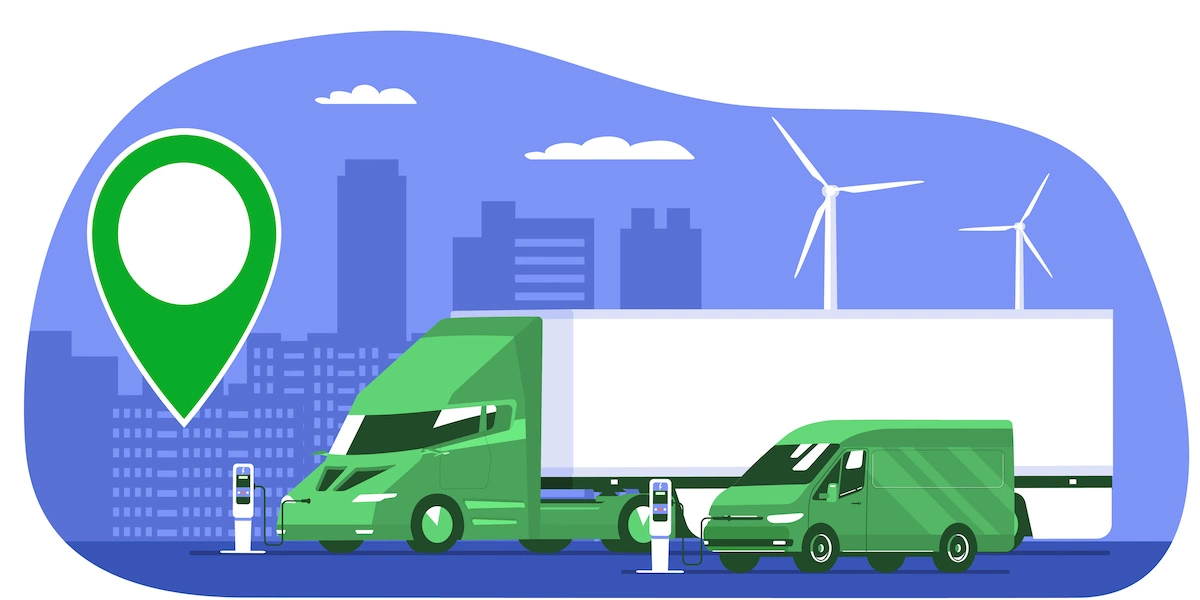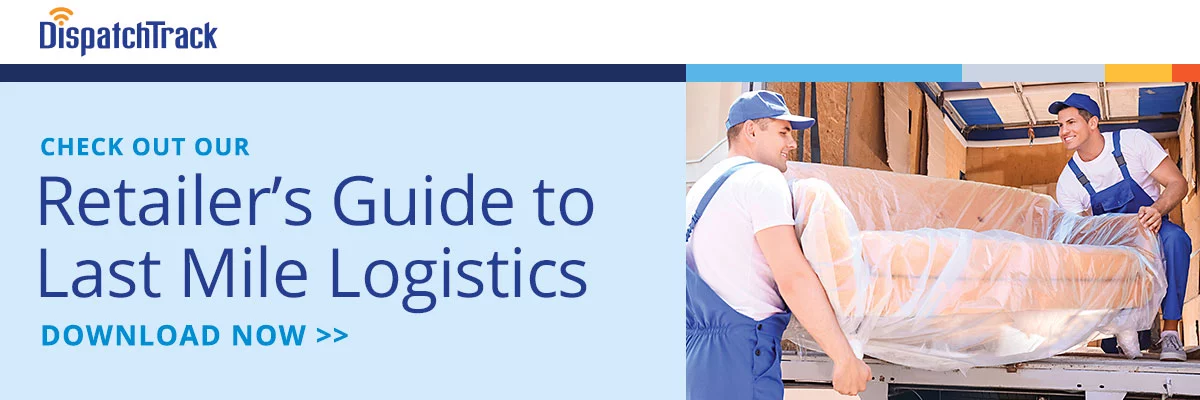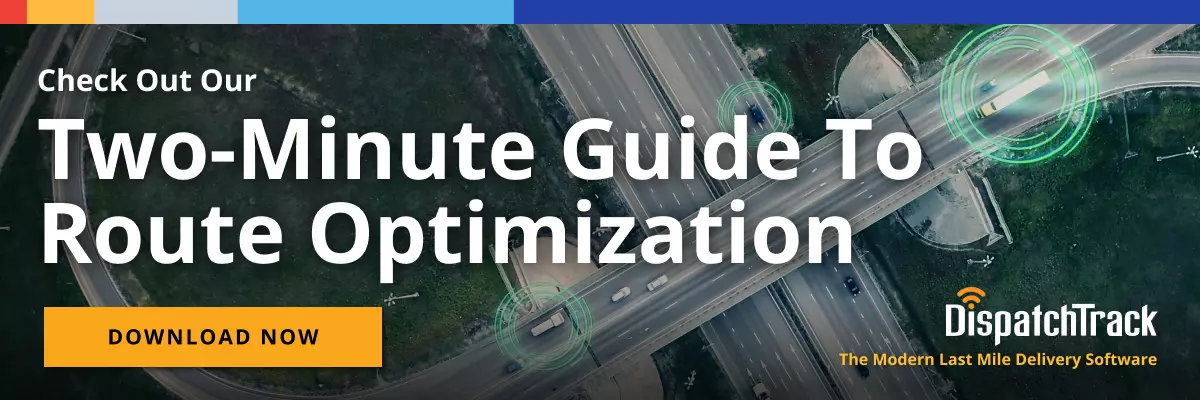For supply chain businesses, a recent report revealed good and bad news: On the one hand, nearly half of consumers polled said that they felt the responsibility for increasing sustainability fell on retailers and other corporations (as opposed to individuals or governments). On the other, 70% said that they’d be willing to pay more for products that could boast a sustainable supply chain. The upshot here is pretty straightforward: it’s time to start investing in a greener supply chain, but smart businesses should be able to expect a return on that investment.

One of the most important areas of focus when it comes to investing in green logistics is, of course, the last mile. The final mile is well known to be the most resource-intensive part of most supply chains, which means that it’s rife with opportunities to reduce your carbon footprint. At the same time, consumers aren’t going to get excited about something that they can’t see, which just calls one of the biggest challenges of last mile logistics into starker relief: offering transparency to customers can be just as hard as delivering at the right time.
Luckily, transparency and sustainability can overlap significantly when it comes to delivery management. The trick is to find the right green logistics strategy.
Increase Transparency About Green Supply Chain Initiatives
Like we said above, one of the keys to successful last mile delivery is transparency. You want your customers to know what’s going on with their deliveries at every step of the way—from the moment a delivery is scheduled, to the ETA on delivery day, to a heads up when the driver is about to arrive at the delivery site. In a perfect world, you’ll be able to show the customer live information about the delivery, including truck and driver location and stop number.
When you can make this happen, you decrease disruptions and boost customer satisfaction. Why? Because informed consumers make better choices—whether that’s the choice of where to make a purchase or the choice of whether to go out for a stroll when the delivery truck is on its way. As you can imagine, the same logic applies to last mile sustainability efforts. When you keep your customers in the loop about how you’re working towards sustainability at every stage in the fulfillment process, you give them the information they need to make the right choice. Here are a few initiatives that you might offer transparency into:
- By communicating actively with your customers across the entire delivery process, you’re greatly reducing the need for redelivery attempts, and potentially shrinking your warehouse footprint as well via inventory shrink. If you highlight this fact throughout your last mile communications (e.g. ETA notifications), your customers will get a much clearer sense of how they’re participating in the green delivery logistics efforts.
- If you’re utilizing smart, connected route optimization to generate the most efficient possible routes, you can shave as much as 10% off your last mile fuel consumption simply by driving fewer miles. You can highlight this fact to let consumers know that they’re getting an efficient experience with regard to the last leg of the supply chain.
- When you have visibility into the last mile from end-to-end, you can decrease wastage and ultimately reduce your carbon footprint. This requires connectivity across your entire IT stack, but the results can be powerful. So powerful, in fact, that consumers will want to know about the impact of that decreased wastage on your carbon footprint.
These are only a few examples, but hopefully they suggest ways in which sustainability can become not just a KPI or a subject for boardroom meetings, but an actual part of the customer delivery experience. As long as you have the technological capabilities to make all of that happen, it can be a great way to incorporate that focus on sustainability into the overall value you’re providing to consumers.
Educate Consumers About Green Logistics
The other side of the coin when it comes to boosting transparency about green logistics is to educate customers—not just educate them about what your company is doing, but about the environmental implications of the modern supply chain more broadly. Given the large percentage of consumers who think the ball is squarely in the court of businesses, there’s a real opportunity for businesses to take on the role of trusted advisor when it comes to green delivery logistics. This might include providing information about what the major contributing factors are to carbon emissions in the supply chain to begin with, as well as the ways that consumer choices shape those impacts.
Again, customers are willing to lose a little bit of convenience for a reduction in carbon emissions—but before they can decide on that tradeoff, they have to understand how their decisions actually impact emissions. Your customers might be willing to accept slower delivery turnarounds if they know that it will help you reduce emissions—but first they have to be educated on how more flexible delivery scheduling from the operator’s perspective makes it possible to drive fewer miles and the fact that fuel consumption is one of the biggest factors impacting emissions in the last mile. This too is something that can be worked into customer communication touchpoints, but it can also be leveraged on your website and other communications.
Make Promises You Can Keep
Innovations in green technology and practices are going to take all different forms in the coming years. Some businesses are already starting to decrease their reliance on trucks and vans in the last mile by utilizing micromobility options like scooters and bikes (obviously these have limitations when it comes to big and bulky items). Others are working on electrifying their fleets. Still others are leveraging business intelligence to help them factor carbon emissions into the way they plan resources and make tradeoffs in decision making.
Like any investments, these will come with some risk—but as we saw above, this is the moment for investments in sustainability. What’s important here is to make sure that as you experiment with different ways to reduce your carbon footprint, you’re experimenting on a foundation of visible, connected, reliable “right-time” deliveries.
Why is this important? Because the elements that help ensure consistent delivery performance—i.e. being agile, connected, and intelligent—are the same elements that provide a strong foundation for green logistics:
- Connected: To change the way you distribute goods, you first need a clear understanding of everything that’s happening in your current supply chain at a level of detail that is at once granular and crystal-clear. To do this, each function and data source that impacts the last mile needs to be highly connected and offer visibility across the board.
- Agile: In a nutshell, agility means that your execution looks just as optimal as your planning, even when things don’t go exactly as expected. If you’re going to cut down on redelivery attempts, for instance, you need to be able to stay agile on the day of delivery and manage exceptions in real-time.
- Intelligent: By harnessing the power of AI, you can make better predictions about things like delivery ETAs and changes to your transportation network. This, in turn, gives you the power to keep supply chain disruptions at bay and make adjustments to your last mile logistics network with greater confidence.
Combined, these three elements help you keep your delivery promises. And that extends to keeping promises related to sustainability—when you have the capabilities to delight customers by making plans and executing on them effectively, you can do the same with your sustainability goals. In that way, you can leverage the fact that more and more customers are paying attention to sustainability when choosing who to buy from.

